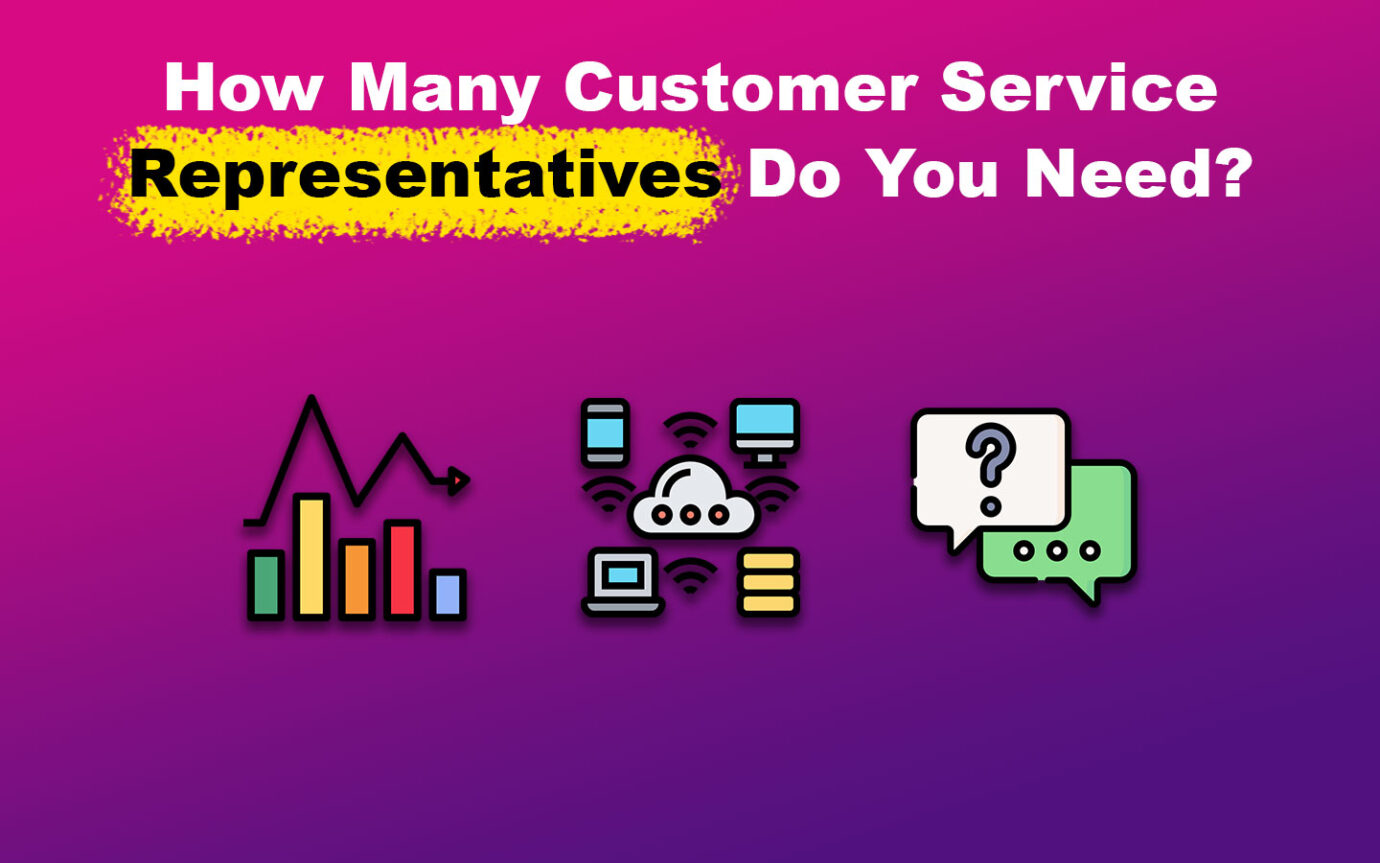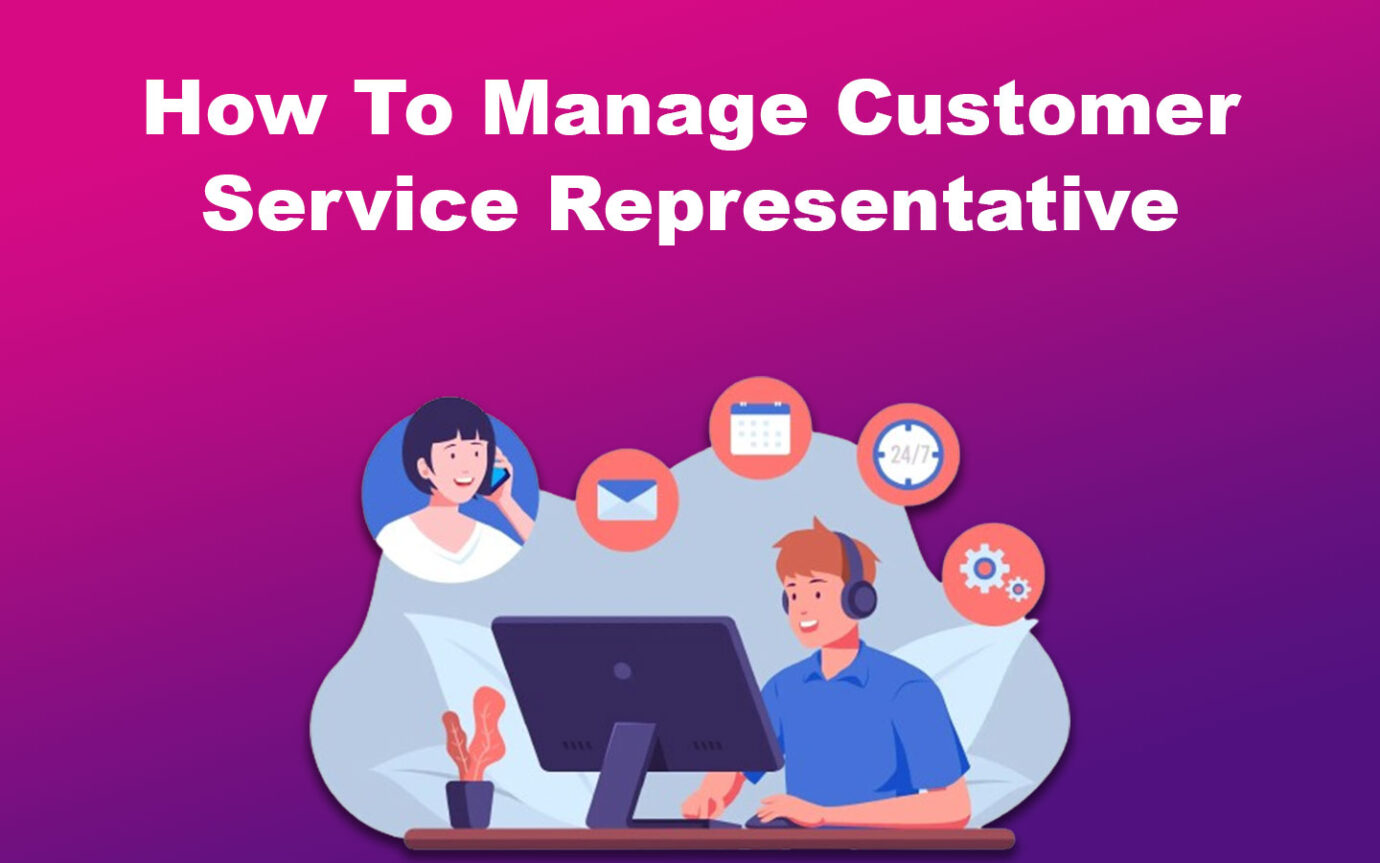As a business owner or manager, it’s important to meet customer demands while maintaining operational efficiency. However, striking the right balance between the two can be daunting. This is where customer service representatives come in.
But how many customer service reps do you need to manage your business effectively?

If you’re stuck and looking for answers to this question, we’ve got you covered! This article will break down the number of customer service reps you need per customer and explain who they should report to.
What Does a Customer Service Representative Do?
Here is what a customer service representative does:
- Answer Customer Inquiries.
Customer service reps reply to clients’ queries through various channels, including phone calls, social media, emails, or live chat. They help your customer compare products and advise on the options that suit their needs. - Provide Service Information.
Customer service representatives can study your company’s products and services. They can share information related to pricing, features, and other service details to assist the customer in making proper decisions. - Resolve Customer Issues.
CSRs help clients troubleshoot simple technical issues. They may guide them on operating a device or program or help them install upgrades and other solutions. - Process Orders and Returns.
Customer service representatives process customer orders and returns via phone or company website. They ensure clients receive accurate information about shopping, delivery time, and other order-related details. - Maintaining Customer Records.
Aside from orders, CSRs use customer relation management systems (CRM) to keep accurate customer records. This helps personalize the service and identify common customer concerns.
Customer service representatives are an example of BPO. Find out more examples of business process outsourcing.
How Many Customer Service Reps Do You Need?
The number of customer service agents you need depends on your customer expectations, the volume of customer inquiries, and the complexity of your product. Technology and seasonal fluctuations may also play a role.
After analyzing these factors, you can calculate how many reps you need to meet your business goals.

Here’s a more in-depth look at the factors affecting the number of customer service reps you need:
- Customer Expectations.
Companies may hire more CSRs if customers require quick or immediate responses or 24/7 support. - Complexity of the Product.
Companies offering complex products or services may require more customer service representatives to handle inquiries and support. Customers buying complex products or services may have more questions or require assistance to use the service more effectively. - The Volume of Customer Inquiries.
The volume of clients can also influence the number of customer service reps you need per customer. The higher the volume, the more the inquiries. A high volume of inquiries may require more CSRs to handle on time. - Technology.
Companies using advanced technology like chatbots may require fewer CSRs to handle customer issues. This is because a chatbot may perform simple tasks without human assistance. - Seasonal Fluctuations.
Due to higher inquiry volume, the number of customer service reps needed may increase during peak seasons. The higher the number of inquiries, the more the CSRs required.
How Much Does a Customer Service Representative Cost?
A customer service representative costs between $9 to $30 per hour, depending on the skill level, location, or years of experience. A representative with a higher skill level or specialized training may demand a higher salary than one without.
A representative living in a major metropolitan area may require a higher salary than one living in a smaller city. This is because the cost of living in major cities is quite high.
Experienced CSRs with a proven track record may demand higher salaries than those starting in the field.
Learn more about customer service representative salaries from Upwork.
How to Hire a Customer Service Representative
Once you determine the number of customer service reps needed, you can identify the hiring criteria. One of the best ways to hire customer service reps is to outsource them from reliable agencies.
Outsourcing from reliable agencies eliminates the need to recruit, hire, and train agents, saving costs.
Hiring from a reliable agency lets you focus on core competencies, streamline your business model, and boost productivity. These representatives are already experts in their field, so they don’t require much guidance.
Reputable agencies have a strict selection process to ensure hired representatives have the necessary customer service skills, including problem-solving and communication skills.
Outsourcing can speed up onboarding, allowing businesses to integrate outsourced agents into customer support operations seamlessly. This saves time and resources that would have been spent on recruitment and training.

Follow these steps if you want to hire a customer service representative on your own:
Step 1: Define the Role
Outline the responsibilities and expectations of the customer service representative position. This can include specific skills or qualifications required, communication channels, or the type of support they will provide.
Step 2: Create the Job Description
Draft a detailed job description that outlines the necessary experience, skills, and desired characteristics for the role.
Step 3: Use Various Recruitment Channels
Post the job opening on various platforms, including your company website, social media, or other popular job boards like Upwork.
Step 4: Screen the Applications
Review the applicants’ resumes and identify candidates with skills and experience that match your requirements.
Step 5: Conduct Interviews
During interviews, assess candidates’ communication skills and fit for the job. Ask about their experience in customer service and handling difficult situations.
Step 6: Check References
After selecting the right candidate for the job, verify their work history, reliability, and performance by contacting their previous employer. If the information checks out, you can proceed to hire the candidate.
Can’t decide if you want to outsource your customer service needs? Knowing the benefits of customer service outsourcing may help you decide.
How to Manage Customer Service Representatives
Follow these steps to manage customer service representatives:

Step 1: Hire the Right Talent
Look for candidates with problem-solving abilities, good communication skills, and a customer-centric approach. Ensure they can handle challenging situations and provide satisfactory solutions to customers.
Step 2: Offer the Right Tools
Provide your customer service reps with the right tools to help them effectively manage customer complaints and inquiries. Tools like chatbots, call recording systems, and customer relationship management (CRM) are quite effective.
Here’s more about providing tools and equipment to remote workers.
Step 3: Encourage Open Communication
Open communication enables CSRs to comfortably discuss their challenges and successes. This allows you to identify areas for improvement and ways to enhance their performance.
Step 4: Provide Training Opportunities
Regular training helps customer service representatives stay updated with current trends in customer service. They can also learn new skills that can help them handle difficult situations.
Step 5: Measure Progress
Evaluate your customer service rep’s performance by the average calls they take, tracking customer satisfaction and response time.
Step 6: Ask for Feedback
Actively seek feedback from your customer service representatives. This will give you insights into your team’s effectiveness and highlight areas for improvement in the process or tools.
Read more about how to manage customer service representatives from Upwork.
Find out more about dedicated customer support in this article.
What Are 4 Examples of Customer Service
Here are the four examples of customer service in detail:

- Quick Response.
This is the speed at which a company responds to customer concerns. If the customer reaches out to the company with a question or concern, they appreciate a quick response, which often builds trust. - Working on Customer Feedback.
A company that values customer feedback and implements suggestions shows that it values its customers and cares about their opinions. This can involve responding to customers promptly or making changes to customer support. - Creating Customer Self-Care Options.
Some customers prefer to find solutions to their problems independently instead of contacting your customer service center. To help them solve their problems, you can create an updated FAQ page or a knowledge article base. - Follow Up With Your Customers.
Following up on clients after sales or service interactions can demonstrate a company’s commitment to customer satisfaction. You can send a thank you note or ask for feedback on the customer experience.